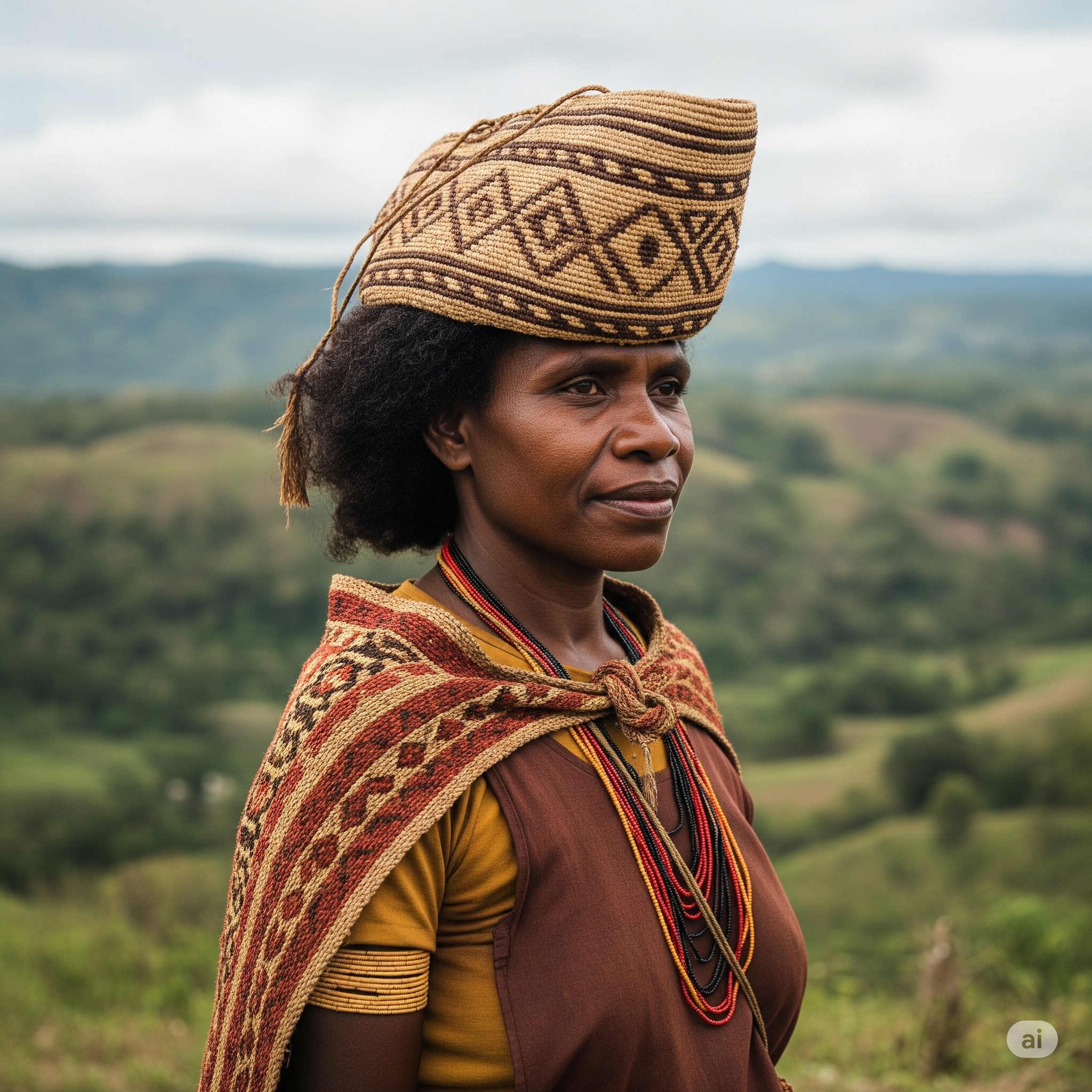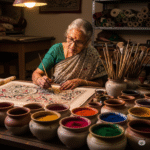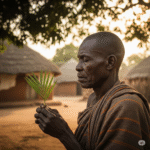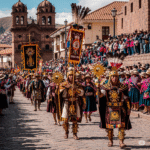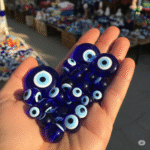In the highlands of Papua, Indonesia, you’ll find a unique handcrafted item slung over the shoulders of women, men, and even children. It’s called a Noken — a hand-woven bag made from natural fibers. But it’s much more than a practical carrier. A Noken holds food, books, firewood, even babies. More importantly, it carries identity, tradition, and a deeply rooted way of life.
What Is a Noken?
Noken (pronounced noh-ken) is a multifunctional, net-like bag made by the indigenous communities of Papua and West Papua provinces. Unlike ordinary bags, Nokens are worn across the forehead, with the bag hanging down the back. This allows hands-free movement while carrying heavy or bulky loads — a necessity for people who often walk long distances over mountainous terrain.
But a Noken is also used for non-physical things. Symbolically, it’s used in rituals, education, gifting, and even politics. A woman who knows how to make a Noken is considered ready for adulthood and marriage. It’s both a rite of passage and a badge of cultural pride.
How Are They Made?
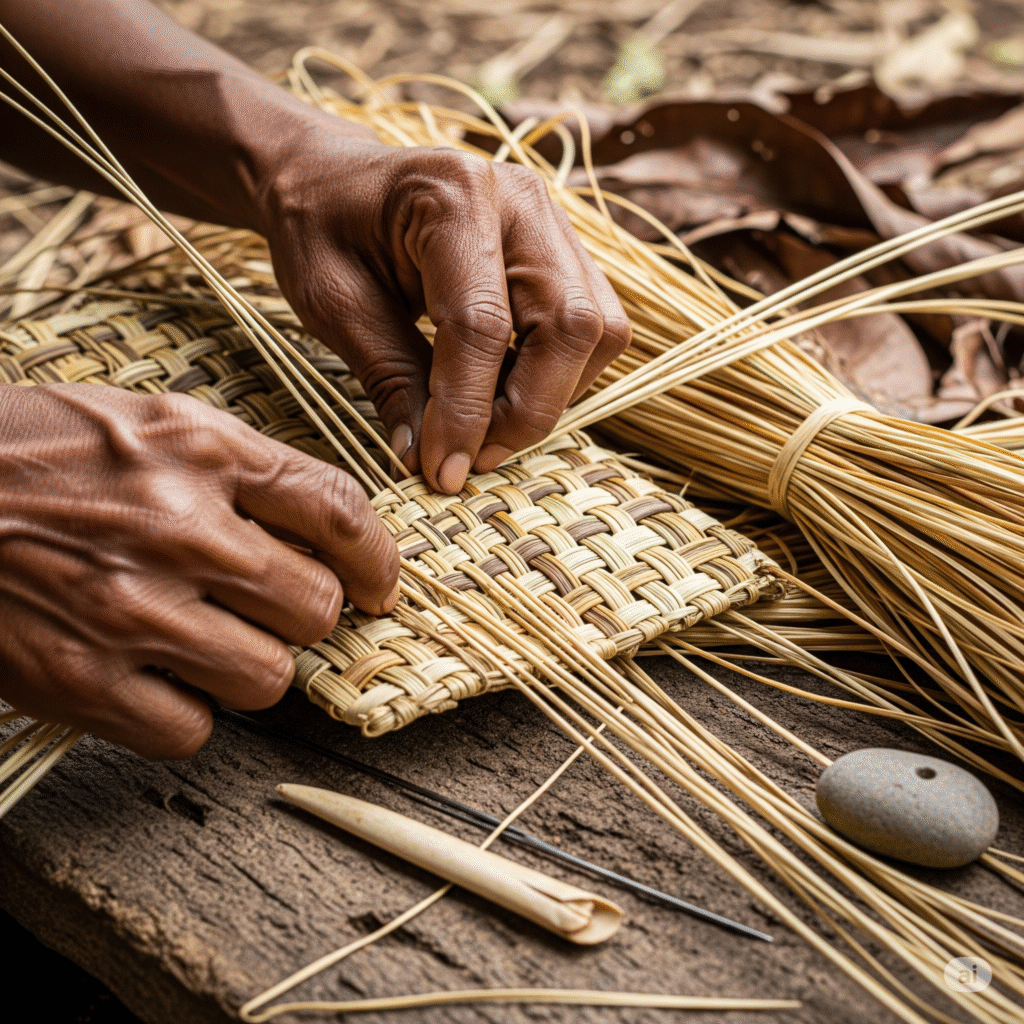
The weaving process begins by collecting fibers from local plants such as tree bark, orchid roots, or leaves of the Gnetum tree. These fibers are boiled, dried, and twisted into threads. The artisan then loops and knots the fibers entirely by hand, without any loom or machinery.
It takes anywhere from a few days to several weeks to complete one Noken, depending on the size and complexity of the pattern. The final bag is stretchy, strong, and completely biodegradable.
Colors and Patterns
Traditionally, Nokens are brown or beige, reflecting the natural color of the fibers. But in modern times, they’re also dyed with natural pigments or synthetic colors, creating vibrant versions used in school or city life. Some are decorated with simple stripes or geometric patterns, while others include tribal motifs that reflect the identity of the weaver’s ethnic group.
Each region in Papua has its own Noken style. For example, the Mee tribe’s Nokens tend to be smaller and used for carrying areca nuts or betel leaves, while Dani tribe Nokens are larger and more robust.
Noken as Intangible Heritage
In 2012, UNESCO recognized the Noken tradition as an Intangible Cultural Heritage of Humanity. The award was more than a cultural honor it was a lifeline. With increasing urbanization and the spread of plastic bags, Noken use had started to decline. The UNESCO recognition sparked new interest and helped revive the practice in schools and women’s groups.
Today, efforts are underway to teach Noken weaving in formal education and to encourage its use in public life, even as part of official attire.
A Symbol of Sustainability
In a world drowning in synthetic packaging, the Noken stands as a quiet example of sustainable design. It’s made from local plants, requires no electricity, and lasts for years. When it’s no longer usable, it decomposes naturally.
In recent years, environmental activists in Indonesia have begun promoting Nokens as an alternative to plastic shopping bags. Some cities even offer discounts to shoppers who use them instead of plastic.
More Than Just a Bag
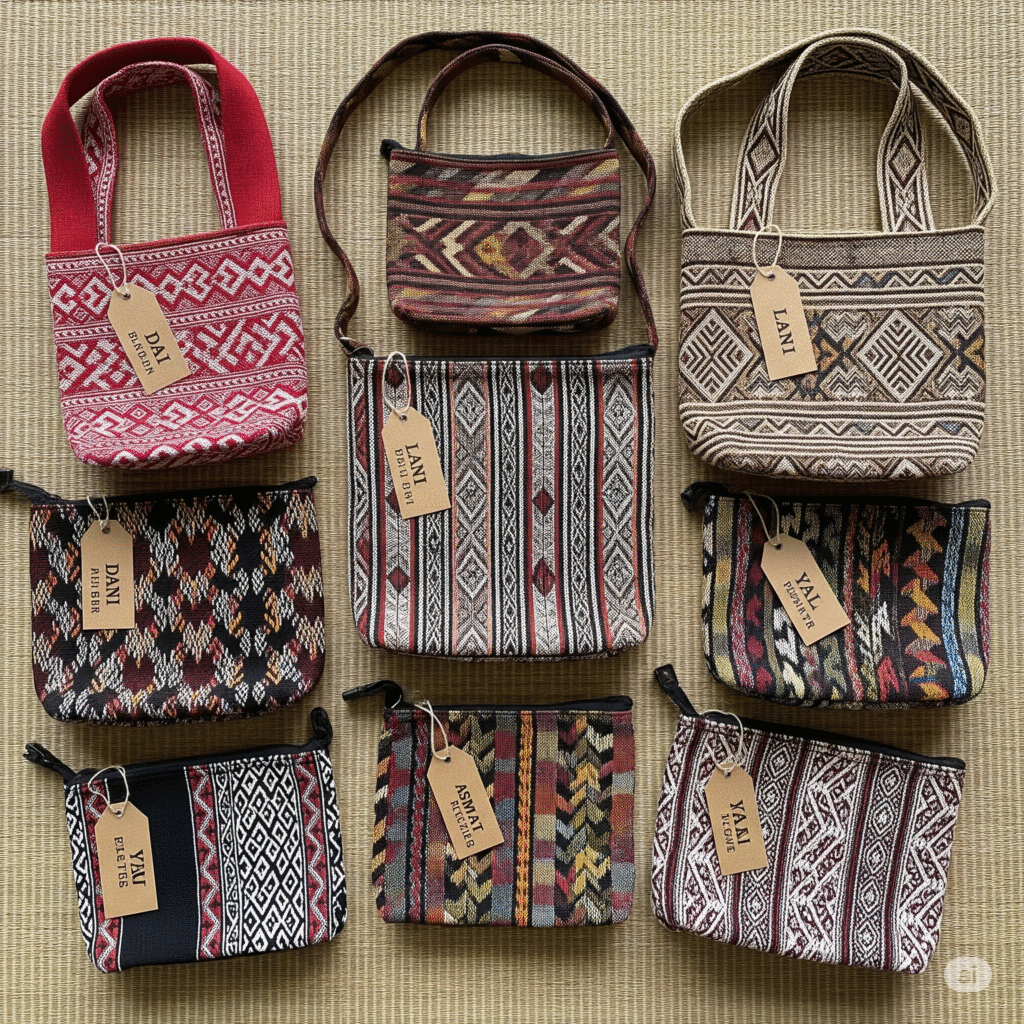
The Noken is not just about utility. It tells stories. It connects generations. When a mother teaches her daughter to make her first Noken, she’s passing on knowledge, patience, and identity. At community gatherings, people exchange Nokens as gifts that carry not just goods, but respect and belonging.
In political protests or peace ceremonies, Nokens are sometimes held up as symbols of cultural unity. They are flexible enough to carry firewood, yet strong enough to carry tradition.
Where You Might See One Today
Today, Nokens are making appearances in art exhibitions, fashion shows, and even in political settings, where Papuan delegates may wear them during speeches to represent their roots. They are also increasingly sold at craft fairs, giving weavers a way to earn income and preserve their craft.
Whether used to carry sweet potatoes or schoolbooks, the Noken reminds us that sometimes, the most powerful cultural objects are not carved in stone or displayed in museums. They are slung over a shoulder, made with love, and passed down by hand.
